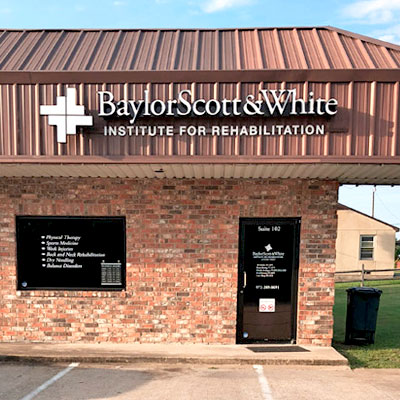What is psoriatic arthritis?
Psoriatic arthritis is a type of arthritis that can affect people with psoriasis, a skin condition that causes red patches with silvery scales. Most people develop psoriasis before psoriatic arthritis, but for some, joint pain starts before or at the same time as the skin symptoms.
The main signs of psoriatic arthritis include joint pain, stiffness and swelling. These symptoms can affect any part of the body, including your fingers and spine, and can range from mild to severe. Both psoriasis and psoriatic arthritis tend to flare up at times and improve or go away during periods of remission.
Although there’s no cure for psoriatic arthritis, advances in treatment can slow its progression, reduce pain and protect the joints.
Types of psoriatic arthritis
Psoriatic arthritis can affect different parts of your body in various ways. There are five main types, each with its own symptoms and severity. Understanding which type you have helps guide treatment.
-
Distal interphalangeal predominant
This type primarily affects the ends of your fingers and toes, causing discomfort, swelling and sometimes stiffness.
-
Asymmetric oligoarticular
This type affects fewer than five joints and usually appears on one side of the body, not symmetrically.
-
Symmetric polyarthritis
This type is similar to rheumatoid arthritis, with joint pain and swelling on both sides of the body, often affecting the same joints.
-
Spondylitis
This involves inflammation in the joints of your spine, which can cause back pain, stiffness and limited flexibility.
-
Arthritis mutilans
This severe form of psoriatic arthritis leads to joint damage, deformities and loss of function, especially in the hands and feet.
Each type of psoriatic arthritis varies in how it affects the body, and the symptoms can range from mild to severe. Treatment options will depend on the type and severity of your condition, and early treatment can help reduce symptoms and prevent further damage.
Psoriatic arthritis symptoms
Nearly all people with psoriatic arthritis have symptoms that affect their joints and skin. You may have additional symptoms as well. The type and severity of symptoms vary from person to person.
Common symptoms can range from mild to severe and include:
- Fatigue: Feeling unusually tired is common in people with PsA
- Enthesitis: Tenderness, discomfort and swelling where tendons and ligaments attach to bones
- Joint swelling: Sausage-like swelling of a whole finger or toe
- Joint pain: Pain, stiffness, throbbing, swelling and tenderness in one or more joints
- Reduced range of motion: Difficulty moving joints due to pain or swelling
- Morning stiffness: Feeling stiff and tired, especially in the mornings
- Nail changes: Pitting (small dents) or separation of the nail from the nail bed
- Eye inflammation: Redness, pain and eye irritation, known as uveitis
The severity of psoriasis on the skin doesn’t always match the severity of psoriatic arthritis. You might have mild skin symptoms but significant joint pain or swelling.
When to see a doctor
It is time to talk with your doctor if you have new or worsening joint or skin symptoms. If you have a family or personal history of psoriasis or psoriatic arthritis, it’s also a good idea to talk with your doctor about your risk factors for psoriatic arthritis. Having this conversation early can help you get the right treatment and prevent severe joint damage.
What causes psoriatic arthritis?
Psoriatic arthritis is an autoimmune disease, meaning the body’s immune system mistakenly attacks its own healthy tissues, causing inflammation, pain and potential damage. While the exact cause of PsA is unclear, researchers believe it results from a combination of genetic factors that make some people more likely to develop the condition, along with environmental triggers such as infections, stress or physical injury.
Risk factors
Although the cause of psoriatic arthritis is unknown, several known risk factors exist. Some of these factors are out of your control. Others are modifiable risk factors that can be avoided or changed. While having multiple risk factors can increase your chance of developing psoriatic arthritis, it is not a guarantee that you will develop the condition. Additionally, people with no risk factors may still get PsA.
Some contributing factors or lifestyle choices that can increase the likelihood of developing psoriatic arthritis include:
Age
Although psoriatic arthritis can affect people of any age, it is most likely to develop between the ages of 30 and 50.
Family history
About four in 10 people with the condition have one or more family members with either psoriasis or psoriatic arthritis.
History of psoriasis
People with a history of psoriasis are much more likely than others to develop psoriatic arthritis.
Infection
In some people, inflammation from certain infections can trigger psoriatic arthritis or another inflammatory condition.
Stress
High levels of stress may trigger an autoimmune condition, such as PsA, in people with a genetic predisposition.
Possible complications
Without treatment, psoriatic arthritis can cause permanent and significant damage to your joints. Although it’s rare, inflammation from PsA can also affect internal organs or tissues and increase your risk of developing other health conditions.
Psoriatic arthritis may increase your risk of:
- Chronic kidney disease
- Dry eye syndrome
- Heart disease
- Gastrointestinal conditions, such as Crohn’s disease
- Nonalcoholic fatty liver disease
- Stroke
Treatment for psoriatic arthritis can also help lower your risk of developing these conditions or other complications.
How is psoriatic arthritis diagnosed?
Psoriatic arthritis is diagnosed based on symptoms and a physical exam, as there is no single test, but a combination of exams and tests can help your doctor determine whether you have this type of arthritis or a different condition, such as rheumatoid arthritis , osteoarthritis or gout. If you've had psoriasis for years and recently developed joint symptoms, it could suggest psoriatic arthritis, though this pattern isn't always the case.
-
Medical history and exam
The first step in diagnosing psoriatic arthritis is a medical exam. During the exam, your doctor will ask about your family and personal medical history and symptoms. You will also have a physical exam to check for possible signs and symptoms of psoriatic arthritis. Your doctor will likely examine your joints, skin, eyes, nails and spine, all of which can be affected by PsA.
In addition to looking closely at these areas, they may gently move your joints or ask you to move your joints to look at your range of motion.
-
Laboratory tests
A doctor may order a combination of lab tests to diagnose psoriatic arthritis and rule out other conditions that have similar symptoms, like rheumatoid arthritis (RA), including:
- Erythrocyte sedimentation rate (ESR): This test measures how quickly red blood cells fall to the bottom of a tube. A higher rate suggests inflammation in the body, which can be a sign of PsA or other inflammatory conditions.
- C-reactive protein (CRP): CRP is a substance released by the liver when there’s inflammation. High levels can indicate autoimmune diseases like PsA, RA, or lupus, though some people with PsA may not have elevated CRP levels.
- Rheumatoid factor (RF): This test looks for proteins your immune system produces that attack healthy tissues. RF is commonly found in people with RA but not in those with PsA, helping your doctor rule out RA.
- Anti-cyclic citrullinated peptide (anti-CCP) antibodies: These are proteins produced by the immune system that attack healthy tissue. They are typically found in people with RA, but not with PsA, helping to differentiate between the two conditions.
- Human leukocyte antigen B27 (HLA-B27): This protein helps your immune system distinguish between your own cells and harmful invaders. An abnormal result may suggest an autoimmune disease like PsA, ankylosing spondylitis or inflammatory bowel disease.
- Joint fluid test: In this test, your doctor uses a needle to remove a small sample of fluid from an affected joint, often the knee. The presence of uric acid crystals in the fluid can suggest gout rather than psoriatic arthritis, though it's possible to have both conditions at the same time.
-
Imaging
Imaging tests are helpful for diagnosing and tracking psoriatic arthritis. These tests can show changes in your joints and help doctors monitor disease progression over time.
- X-rays: X-rays can identify changes in the joints that are specific to PsA, such as joint damage or bone changes.
- Ultrasound: This test uses sound waves to create images of your joints. It can detect early signs of inflammation and bone damage, often showing these issues earlier than X-rays. Ultrasound is also useful for monitoring how PsA progresses over time.
- Magnetic Resonance Imaging (MRI) scans: MRI scans use powerful magnets and radio waves to create detailed images of both hard and soft tissues in your body. It is more sensitive than X-rays or ultrasounds and can provide detailed information about inflammation and joint damage. However, MRIs are more expensive and are often used for more detailed monitoring when other tests have been insufficient.
Psoriatic arthritis treatment
Treatment for psoriatic arthritis offers relief and better quality of life. Your care team may include a dermatologist for skin and nail issues, an orthopedist for joint and muscle concerns, and a rheumatologist for arthritis and inflammatory conditions, with your plan tailored to the severity and pattern of your symptoms.
Lifestyle changes
Lifestyle changes can help you manage symptoms and live a full life with psoriatic arthritis. There are several things you can do at home to support your health and find relief from symptoms, including:
- Avoiding foods that increase inflammation, such as processed foods and sugar
- Maintaining a healthy weight
- Learning new ways to manage day-to-day stress
- Participating in low-impact exercise, such as biking or swimming
- Quitting smoking
- Using heat or cold therapies with the guidance of your care team
Physical and occupational therapy
Physical and occupational therapy can help reduce pain and other symptoms associated with psoriatic arthritis. A physical therapist can help you decrease discomfort and build flexibility and strength to support joint health and prevent injury. In occupational therapy, you can learn ways to conserve energy, decrease pain and protect your joints during everyday activities.
Medication
There is no cure for psoriatic arthritis, but several medications are available to treat the condition and help you manage symptoms. The right medication for you will depend on the type of PsA you have, your symptoms and other health factors. You may need to try different medications to find one that works or use a combination of them.
- Biologics and targeted therapies: This group of medications interrupts specific immune signals to slow or stop inflammation.
- Corticosteroid injections: Corticosteroids help relieve inflammation. The injections deliver medication to the exact site of the pain and can often provide relief for several weeks.
- Disease-modifying antirheumatic drugs (DMARDs): DMARDs are a group of medications that suppress the immune system to help prevent it from attacking healthy cells and tissue.
- Nonsteroidal anti-inflammatory drugs (NSAIDs): NSAIDs are a group of medications that help lower the amount of inflammation in the body. Some NSAIDs are over-the-counter medications, and others require a prescription.
- Topical treatments: These medications are applied to the skin and may be used to treat a range of symptoms, including nail changes, pain or skin issues.
Surgery
Surgery is not needed to treat most cases of psoriatic arthritis. Rarely, you may need joint repair or replacement surgery (arthroplasty) if you have significant joint damage. The type of procedure recommended will depend on your symptoms and which joint is affected.
Locations
We offer several locations for your care, including specialty orthopedic centers in North and Central Texas.

Baylor Scott & White Family Medicine Residency - Waxahachie
2460 N Interstate 35E Ste 215, Waxahachie, TX, 75165- Monday: 8:00 am - 5:00 pm
- Tuesday: 8:00 am - 5:00 pm
- Wednesday: 8:00 am - 5:00 pm
- Thursday: 8:00 am - 5:00 pm
- Friday: 8:00 am - 5:00 pm

Baylor Scott & White Institute for Rehabilitation - Avery Ranch
15004 Avery Ranch Blvd Bldg C, Ste 101, Austin, TX, 78717- Monday: 9:00 am - 7:00 pm
- Tuesday: 7:00 am - 7:00 pm
- Wednesday: 9:00 am - 7:00 pm
- Thursday: 7:15 am - 7:00 pm
- Friday: 7:00 am - 7:00 pm

Baylor Scott & White Institute for Rehabilitation - Burleson
12500 South Fwy Ste 201, Burleson, TX, 76028
Baylor Scott & White Institute for Rehabilitation - Carrollton Sandy Lake
1850 Legends Trl , Carrollton, TX, 75006
Baylor Scott & White Institute for Rehabilitation - Cedar Park East
701 East Whitestone Blvd Ste 100, Cedar Park, TX, 78613- Monday: 7:00 am - 7:00 pm
- Tuesday: 7:00 am - 7:00 pm
- Wednesday: 7:00 am - 7:00 pm
- Thursday: 7:00 am - 7:00 pm
- Friday: 7:00 am - 7:00 pm

Baylor Scott & White Institute for Rehabilitation - Cedar Park West
500 W Whitestone Blvd Ste 101, Cedar Park, TX, 78613- Monday: 7:00 am - 7:00 pm
- Tuesday: 7:00 am - 7:00 pm
- Wednesday: 7:00 am - 7:00 pm
- Thursday: 7:00 am - 7:00 pm
- Friday: 7:00 am - 7:00 pm

Baylor Scott & White Institute for Rehabilitation - Dallas Carroll Ave
1015 N Carroll Ave Ste 100, Dallas, TX, 75204
Baylor Scott & White Institute for Rehabilitation - Dallas N. Washington Ave
411 N Washington Ave Ste 3900, Dallas, TX, 75246
Baylor Scott & White Institute for Rehabilitation - Far West
6818 Austin Center Blvd Ste 111, Austin, TX, 78731
Baylor Scott & White Institute for Rehabilitation - Fort Worth Camp Bowie
3621 Camp Bowie Blvd , Fort Worth, TX, 76107
Baylor Scott & White Institute for Rehabilitation - Frisco Main
5858 Main St Ste 160, Frisco, TX, 75033
Baylor Scott & White Institute for Rehabilitation - Ft Worth Bryant Irvin
4901 Bryant Irving Rd N Ste 200, Fort Worth, TX, 76107
Baylor Scott & White Institute for Rehabilitation - Garland Shiloh
333 N Shiloh Rd Ste 108, Garland, TX, 75042
Baylor Scott & White Institute for Rehabilitation - Georgetown
4112 Williams Dr Ste 103, Georgetown, TX, 78628
Baylor Scott & White Institute for Rehabilitation - Georgetown Northwest
5353 Williams Dr Ste 100, Georgetown, TX, 78633
Baylor Scott & White Institute for Rehabilitation - Grapevine
1643 Lancaster Dr Ste 100, Grapevine, TX, 76051
Baylor Scott & White Institute for Rehabilitation - Hutto
567 FM 685 (Chris Kelley Blvd) , Hutto, TX, 78634
Baylor Scott & White Institute for Rehabilitation - Irving MacArthur
2001 N MacArthur Blvd Bldg I, Ste 550, Irving, TX, 75061
Baylor Scott & White Institute for Rehabilitation - Kyle Parkway
5695 Kyle Pkwy Ste 140, Kyle, TX, 78640
Baylor Scott & White Institute for Rehabilitation - Leander
1007 S Highway 183 , Leander, TX, 78641
Baylor Scott & White Institute for Rehabilitation - Liberty Hill
14125 W State Hwy 29 Ste B204, Liberty Hill, TX, 78642
Baylor Scott & White Institute for Rehabilitation - Little Elm
2700 E Eldorado Pkwy Ste 409, Little Elm, TX, 75068
Baylor Scott & White Institute for Rehabilitation - Manor
12400 Gregg Manor Rd Ste 101, Manor, TX, 78653
Baylor Scott & White Institute for Rehabilitation - McKinney Eldorado
2960 Eldorado Pkwy Ste 75, McKinney, TX, 75070
Baylor Scott & White Institute for Rehabilitation - McKinney Lake Forest
5236 W University Dr Ste 3500, McKinney, TX, 75071
Baylor Scott & White Institute for Rehabilitation - McKinney Red Bud
1705 W University Dr Ste 119, McKinney, TX, 75069
Baylor Scott & White Institute for Rehabilitation - Mesquite Belt Line
1313 N Belt Line Rd Ste 102, Mesquite, TX, 75149
Baylor Scott & White Institute for Rehabilitation - Mesquite Republic
1650 Republic Pkwy Ste 103, Mesquite, TX, 75150
Baylor Scott & White Institute for Rehabilitation - Mid-Cities
6501 Precinct Line Rd Ste 200, North Richland Hills, TX, 76182
Baylor Scott & White Institute for Rehabilitation - Midlothian
1441 S Midlothian Pkwy Ste 170, Midlothian, TX, 76065
Baylor Scott & White Institute for Rehabilitation - Murphy
511 W FM 544 Ste 208, Murphy, TX, 75094
Baylor Scott & White Institute for Rehabilitation - North Arlington
4120 SH 360 Suite 105, Fort Worth, TX, 76155
Baylor Scott & White Institute for Rehabilitation - North Dallas Coit
510 N Coit Rd Ste 2035, Richardson, TX, 75080
Baylor Scott & White Institute for Rehabilitation - North Garland
7217 Telecom Pkwy Ste 200, Garland, TX, 75044
Baylor Scott & White Institute for Rehabilitation - Pflugerville
16051 Dessau Rd Ste A, Pflugerville, TX, 78660
Baylor Scott & White Institute for Rehabilitation - Plano Alliance
4825 Alliance Blvd Ste 200, Plano, TX, 75093
Baylor Scott & White Institute for Rehabilitation - Plano West Parker
4701 W Parker Rd Ste 625, Plano, TX, 75093
Baylor Scott & White Institute for Rehabilitation - Red River
3200 Red River St Ste 101, Austin, TX, 78705
Baylor Scott & White Institute for Rehabilitation - Richardson Collins
1740 N Collins Blvd Ste 100, Richardson, TX, 75080
Baylor Scott & White Institute for Rehabilitation - Round Rock
116 Sundance Pkwy Ste 400, Round Rock, TX, 78681
Baylor Scott & White Institute for Rehabilitation - Round Rock University
300A University Blvd , Round Rock, TX, 78665
Baylor Scott & White Institute for Rehabilitation - South Grand Prairie
2950 W Camp Wisdom Rd Ste 200, Grand Prairie, TX, 75052
Baylor Scott & White Institute for Rehabilitation - South Lamar
3901 S Lamar Blvd Ste 140, Austin, TX, 78704
Baylor Scott & White Institute for Rehabilitation - Terrell
512 American Wy Ste E4, E5, E6, Terrell, TX, 75160
Baylor Scott & White Institute for Rehabilitation - The Colony
4897 State Highway 121 , The Colony, TX, 75056
Baylor Scott & White Institute for Rehabilitation - Waxahachie
2460 N. Interstate 35E Suite 260, Waxahachie, TX, 75165
Baylor Scott & White Institute for Rehabilitation - Weatherford
2035 Fort Worth Hwy Ste 300, Weatherford, TX, 76086
Baylor Scott & White Institute for Rehabilitation - West 38th St.
711 W 38th St Suites B3 & B4, Austin, TX, 78705
Baylor Scott & White Institute for Rehabilitation - Wylie
600 Cooper Dr Ste 130, Wylie, TX, 75098
Baylor University Medical Center, part of Baylor Scott & White Health
3500 Gaston Ave , Dallas, TX, 75246Hours of Operation
Hours of Operation
Office Hours
Frequently asked questions
-
How much does psoriatic arthritis increase risk of heart disease?
People with psoriatic arthritis have a higher risk of heart disease, nearly double that of the general population. Chronic inflammation can damage blood vessels and lead to plaque buildup. Additional factors like high blood pressure, obesity and diabetes can also contribute to the risk.
-
Can you have psoriatic arthritis without psoriasis?
Yes, it’s possible to have psoriatic arthritis without psoriasis. While most people develop psoriasis before arthritis symptoms, some may get arthritis first or never develop psoriasis at all. PsA is diagnosed based on joint pain, swelling, morning stiffness and other symptoms like nail changes or eye inflammation.
-
Does psoriatic arthritis cause fatigue?
Yes, fatigue is common in psoriatic arthritis, affecting about 80% of people. It’s often more severe than psoriasis-related fatigue and can be debilitating. Inflammation, sleep disturbances from pain, and related conditions like obesity or depression contribute to fatigue, making it difficult to function or even get restful sleep.
-
Is psoriatic arthritis an autoimmune disease?
Yes, psoriatic arthritis is an autoimmune disease where the immune system mistakenly attacks healthy tissue, causing inflammation in the joints, tendons or spine. It is often linked to psoriasis, a skin condition that affects the nails. This inflammation can lead to joint pain, stiffness and other symptoms.
-
Is psoriatic arthritis hereditary?
Psoriatic arthritis (PsA) is likely hereditary. Around 40% of people with PsA have a close relative with the condition, and genetic markers are linked to it. While genetics play a significant role, environmental factors like trauma or infections may trigger PsA in those with a genetic predisposition.
-
How long can a psoriatic arthritis flare last?
A psoriatic arthritis flare-up can last anywhere from a few days to a few months, depending on the person. Some people have flare-ups more often than others. Medication treatment can help reduce symptoms and shorten flare-ups by controlling inflammation.
-
Can psoriatic arthritis cause neuropathy?
Yes, psoriatic arthritis (PsA) can cause neuropathy, leading to weakness, numbness and pain. Inflammation from PsA can damage nerves, making them overly sensitive and sending incorrect pain signals. Additional conditions like Type 2 diabetes or severe PsA can increase the risk of neurological complications.